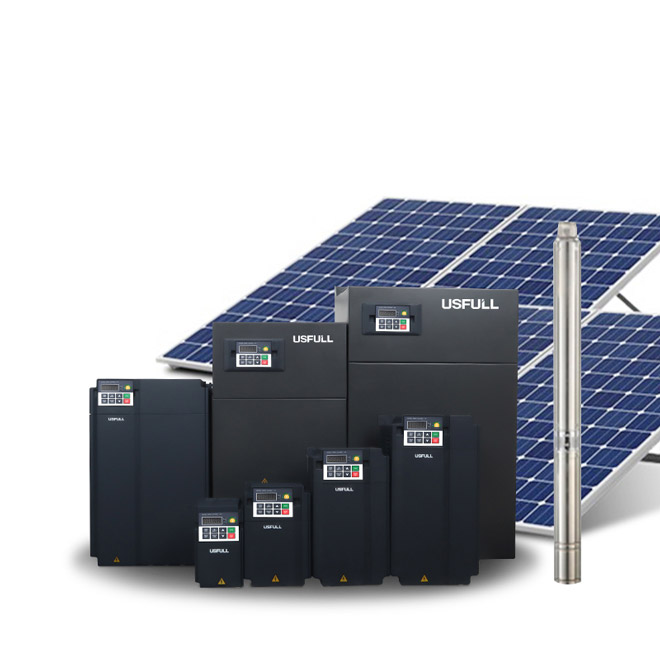Chinas Gesamtkapazität an netzgekoppelten PV-Kraftwerken wird bis Ende 2017 voraussichtlich mehr als 100 GWs erreichen
Nach den Statistiken der zuständigen "Denkfabrik" erreichte die kumulierte Gesamtkapazität der netzgekoppelten Photovoltaik-/PV-Kraftwerke in China im November 2016 mehr als 76 GWs. Davon hatte die von Januar bis Oktober 2016 neu installierte Kapazität bereits 30 GWs erreicht. Ausgehend von der aktuellen Situation würde die kumulierte netzgekoppelte Kapazität bis Ende 2016 76 GW übersteigen. Die Analysten von PVMEN schätzen außerdem, dass es bis Ende 2018 etwa 110 GWs sein werden.
Ein weiterer Punkt ist, dass von den derzeit an das Stromnetz angeschlossenen Kraftwerken viele Anlagen mit einer Gesamtkapazität von 5 GW, sowohl im Bau als auch fertiggestellt, keine Subventionen erhalten haben.
Die kumulierte Gesamtkapazität im Jahr 2017 wird bald 100 GW erreichen
- Die Gesamtkapazität der von der Regierung im Jahr 2016 geförderten PV-Kraftwerke beträgt 23,83 GWs. Und von den 5,5-GW-LEADER-Projekten haben die meisten noch nicht mit dem Bau begonnen, mit Ausnahme eines 500-MW-Projekts in Zhangjiakou. Gemäß den Vorschriften müssen diese Projekte bis Ende 2017 fertiggestellt und an das Netz angeschlossen sein.
- Bereits Mitte Oktober startete die Regierung die erste Serie von Photovoltaik-Projekten zur Armutsbekämpfung mit einer Gesamtkapazität von 5,16 GWs. In dem Dokument ist jedoch kein Fertigstellungstermin vorgesehen. Ein beträchtlicher Teil der Projekte müsste also bis zur Fertigstellung im Jahr 2017 verlängert werden.
- Von den 12,6 GW, die 2016 für allgemeine PV-Kraftwerke ausgelegt waren, werden in der ersten Jahreshälfte 2017 etwa 5 GW fertiggestellt.
Diese drei Arten von Indikatoren für die 2016 zugewiesenen netzgebundenen Projekte werden 2017 mit einer geschätzten Gesamtkapazität von etwa 15 GW fertiggestellt werden.
Entsprechend der gängigen Praxis wird die Gesamtkapazität im Jahr 2017 aus der Verteilung der Förderindikatoren in den Jahren 2015 und 2016 abgeleitet. Geht man von 5 GWs für den allgemeinen Indikator, 5 GWs für die neu hinzugekommenen LEADER-Projekte, 5 GWs für die Photovoltaik-Projekte zur Armutsbekämpfung und 5 GWs für die dezentralen Systeme für Industrie und Gewerbe ohne Subventionen aus, erreicht die neu hinzugekommene Größe/Kapazität im Jahr 2017 20 GWs.
Und tatsächlich werden viele Kraftwerke gebaut, ohne dass sie von der Regierung subventioniert werden, so wie die im zweiten Absatz erwähnten 5 GW. Auf der Grundlage dieser Daten wird die gesamte nationale Kapazität von netzgekoppelten PV-Kraftwerken bis Ende 2017 voraussichtlich mehr als 100 GW erreichen. Auf diese Weise wäre es nicht schwer, bis Ende 2018 110 GW zu erreichen.
Darüber hinaus wird das System der "grünen Zertifikate" im Energiebereich in China wahrscheinlich 2017 eingeführt werden. Mehrere große traditionelle Stromerzeugungsunternehmen, deren Geschäft einen beträchtlichen Anteil an der thermischen Stromerzeugung hat, werden sich auf die Entwicklung erneuerbarer Energien konzentrieren. Da das Verständnis der Menschen für erneuerbare Energien weiter zunimmt, wird es auf dem Markt für dezentrale Photovoltaikanlagen einen harten Wettbewerb geben.
Die geschätzte Kapazität bis zum Ende des 13. Fünfjahreszeitraums
Im kürzlich veröffentlichten 13. Fünfjahresplan für die Entwicklung der Energieversorgung heißt es: "Die Gesamtkapazität der Solarstromerzeugung soll bis 2020 110 Millionen Kilowatt oder mehr erreichen, einschließlich mehr als 60 Millionen Kilowatt für die dezentrale PV-Stromerzeugung und 5 Millionen Kilowatt für die solarthermische Stromerzeugung." Es wird gesagt, dass der bevorstehende 13. Fünfjahresplan für Energie und der 13.
Es sollte betont werden, dass der 13. Fünfjahresplan nur die grundlegenden Ziele für die Entwicklung der PV-Stromerzeugung festlegt, nicht aber die Obergrenzen. Der 12. Fünfjahresplan sah beispielsweise vor, dass die Gesamtkapazität der Solarstromerzeugung bis Ende 2015 21 GW erreichen sollte; tatsächlich betrug die tatsächliche Photovoltaik-Stromerzeugung jedoch 43 GW - was das Doppelte des ursprünglich geplanten Ziels für alle Arten der Solarstromerzeugung bedeutet.
Bislang können wir davon ausgehen, dass die Kapazität bis zum Ende des 13. Fünfjahreszeitraums (2020) 150 GW erreichen wird.



